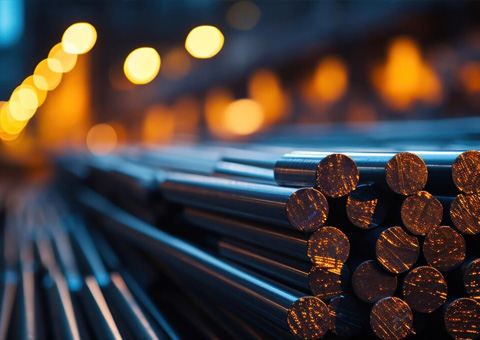The US, India, and Japan have all announced increasing restrictions on steel imports this week to protect domestic production against cheap Chinese steel, which has been exported in record numbers this year. They join Europe and Canada, among others, who launched anti-dumping investigations into steel and other metal imports earlier this year.
In a notification published on Saturday, India’s Directorate General of Trade Remedies (DGTR), the government’s organisation to administer remedial trade measures, recommended a 12% import tariff on steel products. The notification warned of “serious injury” to the domestic industry due to the dumping. If enacted by the government, the tariffs would last three years and be scaled down by 0.5% each year.
India currently imposes a 12% so-called “safeguard duty” on steel imports, which it enacted in April as a temporary measure for 200 days to stop increasing cheap Chinese imports. While India is a net importer of steel, it also remains one of the world’s largest steel producers; steel products account for 2% of GDP, and the £48 billion domestic steel industry employs 2.6 million people. The DGTR report described a “recent, sudden, sharp and significant increase” in cheap foreign imports, especially from China, in recent months, which officials consider dangerous to fair competition and a threat to the domestic industry.
Similarly, the Japan Iron and Steel Federation and four other steel lobby groups announced on Monday that they had petitioned the government for increased controls to enforce existing restrictions on steel imports. Japan enacted a range of anti-dumping investigations and measures this year to prevent cheap steel imports, mainly from China and Taiwan, from causing unfair competition. However, industry groups say these measures are far too easy to circumvent: for example, through transshipment or miscategorisation of shipments.
The US also expanded its steel and aluminium tariffs this week to cover over 400 new products, such as fire extinguishers, construction materials, and chemicals involved in steel production. The new list will cover an estimated £96 billion’s worth of products, for a total impact that is nearly double that of the original tariffs. A US government spokesman said the expanded list would “expand the [tariffs’] reach” and “shut down avenues for circumvention”.
The tariffs on steel and aluminium products were first introduced in February and set at 25%. Last month, the US raised rates to 50% and expanded the tariffs to also cover semi-finished copper products in a bid to protect domestic industries.
At the same time, a fatal explosion in a US steel factory near Pittsburgh last week is bringing domestic steel production back under discussion. Despite large investments to make US steel competitive again, the industry remains threatened by cheap foreign imports and decreasing support due to the industry’s dangerous and polluting nature.
Mind like a steel trap?
Chinese steel exports have increased massively in recent years, hitting an all-time high of 111 million tonnes in 2024 – making it by far the biggest steel exporter in the world, far behind major producers India and Germany. Exports have kept increasing this year, seeing a 9.2% increase in the first half of 2025 despite a sharp rise in anti-dumping investigations and the threat of tariffs.
The domestic industry is facing threats from a decline in domestic demand: experts predict that a slowdown in the Chinese real estate market will translate to decreasing demand for steel by the construction industry, a major steel consumer. As such, steel producers are increasingly turning to the export markets to maintain growth; large volumes of cheap exports, both in crude steel and indirect steel exports like machinery and other products, have led to accusations of dumping from importing countries.
The EU has been investigating China for anti-dumping practices since April 2024, when Eurofer, the European steel association, filed a complaint claiming China’s market share of imports had been increasing steadily since 2021 at prices much lower than the competition. In May this year, the EU imposed tariffs as high as 62% on some Chinese tinplate imports to protect the European industry from dumping.
For its part, Canada launched an investigation into alleged steel dumping for imports from South Korea, Vietnam, Turkey, and China in May this year. The investigation will also look into whether the Chinese government is subsidising the steel industry and leading to unfair export prices, a practice prohibited by the World Trade Organization (WTO).
Source:Trade Finance Global

